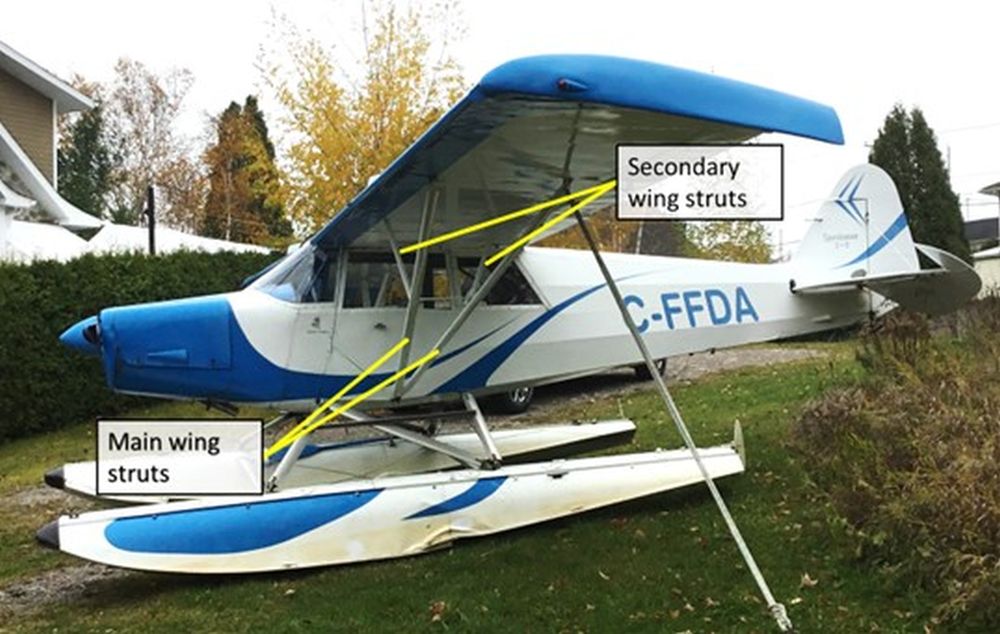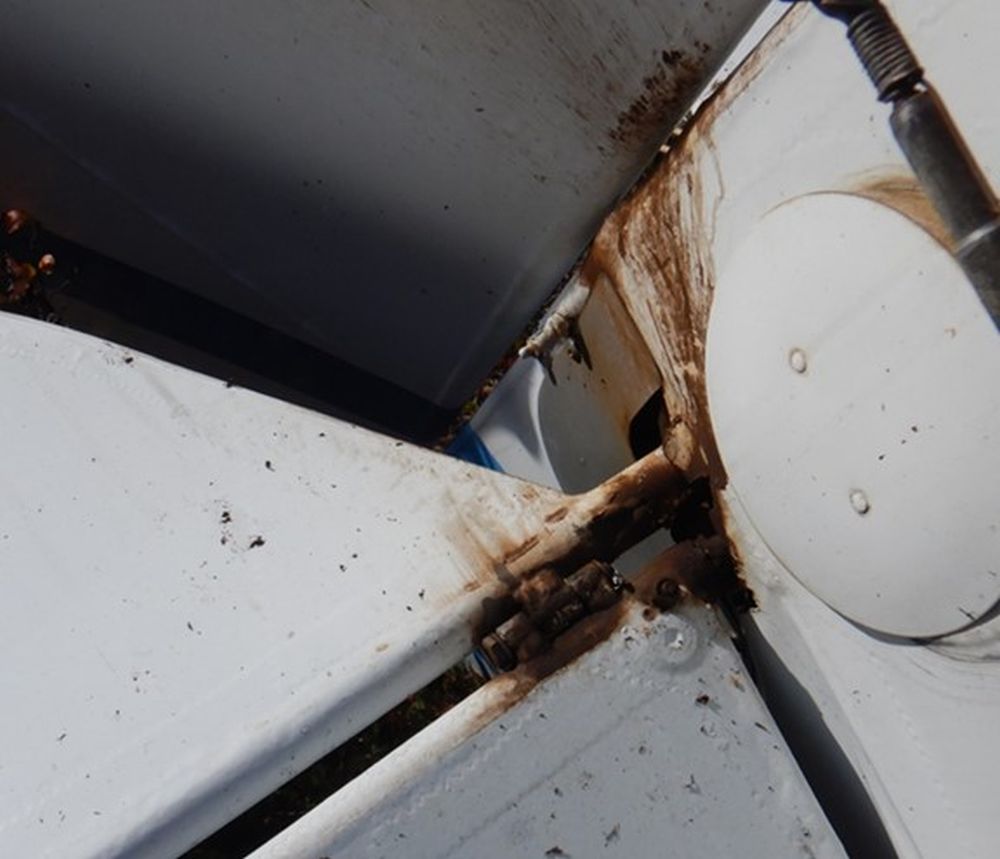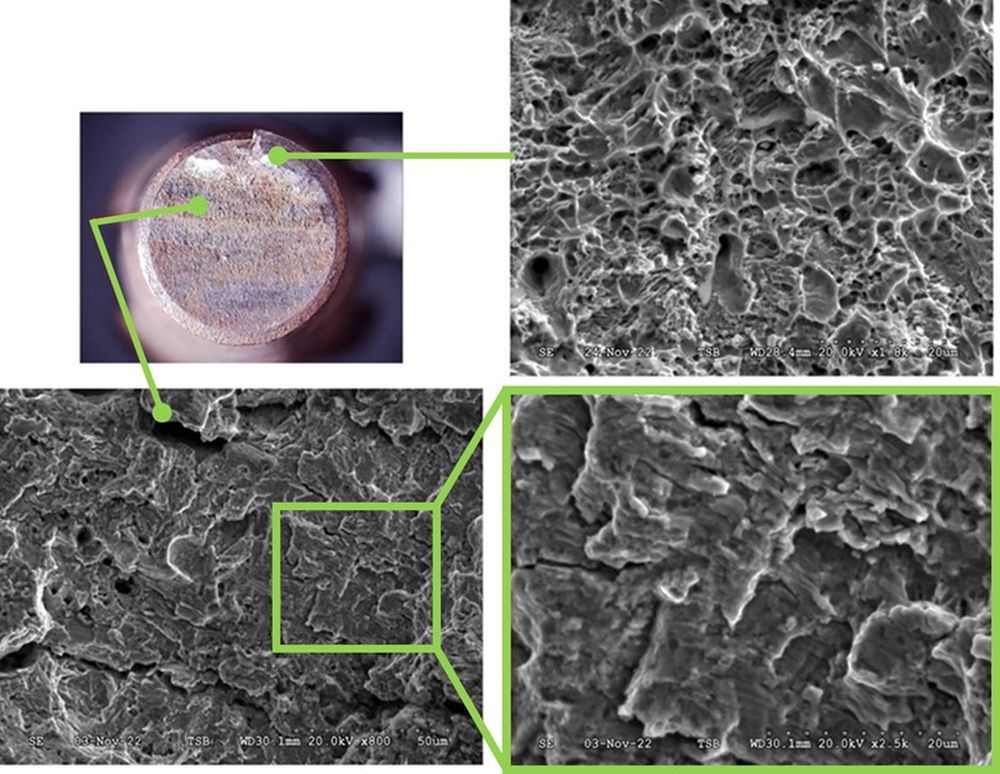In-flight separation of left wing
Privately registered
Wag-Aero Sportsman 2+2
(amateur-built floatplane) C-FFDA
Rivière Bonnard Aerodrome, Quebec
13 NM WSW
The Transportation Safety Board of Canada (TSB) investigated this occurrence for the purpose of advancing transportation safety. It is not the function of the Board to assign fault or determine civil or criminal liability. This report is not created for use in the context of legal, disciplinary or other proceedings. See Ownership and use of content. Masculine pronouns and position titles may be used to signify all genders to comply with the Canadian Transportation Accident Investigation and Safety Board Act (S.C. 1989, c. 3).
History of the flight
At approximately 0830Footnote 1 on 23 September 2022, the Wag‑Aero Sportsman 2+2 amateur-built floatplane (registration C‑FFDA, serial number 792), with the pilot and 1 passenger on board, took off from Lake Mylène, 12 nautical miles west of the Rivière Bonnard Aerodrome (CRB4), Quebec, to conduct a local visual flight rules flight.
Approximately 4 nautical miles south of Lake Mylène, the floatplane’s left wing separated completely, resulting in an uncontrolled descent of the floatplane, which then struck the terrain. The 2 occupants were fatally injured. The floatplane was destroyed by the force of the impact. There was no post-impact fire. The 406 MHz emergency locator transmitter activated, and the Cospas-Sarsat search and rescue satellite system detected the signal at 0846.
Weather information
According to Environment and Climate Change Canada observations for the area of CRB4, located 13 NM east-northeast of the accident site, winds were from the west-northwest between 13 and 17 km/h (7 to 9 knots) between 0800 and 0900 on the day of the occurrence. The temperature was 4 °C, and the dew point was 2 °C.
The graphic area forecasts valid at the time of the occurrence indicated moderate mechanical turbulence between the surface and 3000 feet above ground level (AGL) and, occasionally, towering cumulus clouds topped at 14 000 feet above sea level, ceilings at 1200 feet AGL, and visibility of 2 to 5 statute miles in light rain and snow showers and/or mist.
Pilot information
The pilot held the appropriate licence and ratings to conduct the occurrence flight in accordance with existing regulations: he had a private pilot licence issued in 1989 and a valid Category 3 medical certificate. The pilot had accumulated over 4400 flight hours, almost all of them on the occurrence aircraft.
According to information gathered during the investigation, there was no indication that the pilot’s performance was affected by medical or physiological factors.
Aircraft information
The aircraft—an amateur-built floatplane—had been built by the occurrence pilot in 1989. According to the aircraft’s journey log, on 04 September 2022, the aircraft had accumulated 4422 flight hours since it was built.
The floatplane was equipped with a 200 hp Avco Lycoming IO-360-A1B6 engine (serial number L-59367A). Each wing was supported by 2 main wing struts and 2 secondary wing struts (Figure 1).
Accident site and wreckage examination
The floatplane’s left wing was found approximately 300 feet away from the wreckage. It was heavily damaged. The aft main wing strut was practically intact and was still attached, but the clevis that attached the strut to the fuselage was corroded and had a clean break. The other main strut (the forward main strut) normally found on the same wing was missing and was not found at the site. Nearly all of the attachment points, hinges, and flight control linkages on the left wing showed significant signs of corrosion.Footnote 2
The floatplane wreckage came to rest inverted. Damage to the floats and the engine was symmetrical, a sign that the aircraft was not rolling when it struck the ground. The right wing severed a small tree. The distance between this tree and the wreckage suggests a nose-down angle of approximately 60° when the aircraft struck the ground. As with the left wing, nearly all of the attachment points, hinges, and flight controls linkages on the right wing, as well as on the aircraft’s tail, showed significant signs of corrosion (Figure 2).
Technical examination
For the purposes of this investigation, the 2 main struts for the right wing (forward and aft), the aft main strut for the left wing, and all clevises attaching the struts to the fuselage were sent to the TSB Engineering Laboratory in Ottawa, Ontario, for examination. The examination revealed that the right strut clevises and aft left strut clevis had failed in overload. The forward left strut clevis showed signs of fatigue cracking.
The forward left clevis was examined using a macroscopeFootnote 3 and most of the fracture surface was found to be flat with beachmarks except for a small portion at the end, which was raised and textured (Figure 3, top left image). The clevis was then examined with a scanning electron microscope.Footnote 4 The flat portion of the fracture surface was found to be heavily obliterated, although some striations and secondary cracking (indicative of fatigue) were observed (Figure 3, lower images). No crack initiation sites were found. The raised and textured area observed macroscopically consisted of ductile dimples (Figure 3, top right image), which is indicative of ductile overload.
The failure of the forward left clevis likely caused the aft left clevis to fail in overload, which in turn caused the separation of the left wing. An irreversible loss of control then occurred, followed by the collision with the terrain.
Aircraft maintenance
All aircraft must be maintained in accordance with a maintenance scheduleFootnote 5 that lists the scheduled inspections to be carried out. The depth of these inspections must be “consistent with the general condition and operating role of the aircraft.”Footnote 6 A maintenance schedule must be approved by the Minister except when the owner of a small aircraft that is not being used for commercial operations decides to comply with appendices B and C of Canadian Aviation Regulations (CARs) Standard 625.
Performance of maintenance tasks
One of the requirements in Appendix B states, “[t]he method of inspection for each item on the maintenance schedule shall be in accordance with the manufacturer’s recommendations or standard industry practice.”Footnote 7
For amateur-built, as well as owner-maintained aircraft, the person who performs the maintenance is not required to hold an aircraft maintenance engineer licence. However, according to the information note in Standard 571, which provides clarification on CAR 571.02, “[p]ersons who perform maintenance or elementary work are required to follow the manufacturer’s recommendations, or equivalent practices.”Footnote 8 For amateur-built aircraft, maintenance instructions may have been published by the kit provider. These instructions could serve as the basis for a manufacturer (the person who builds the aircraft) who decides to develop specific recommendations.Footnote 9
Where the manufacturer has not made specific recommendations, standard industry practices are to be used. These practices include, but are not limited to, the methods published by Transport Canada, or a foreign Civil Aviation Authority, the manufacturer of a similar product,Footnote [10] or other practices that may be published provided that they are generally accepted by the Canadian aviation industry.Footnote 11
One standard industry practice consists of using the methods published by the U.S. Federal Aviation Administration (FAA) in Advisory Circular (AC) 43‑13.Footnote 12,Footnote 13 This circular contains methods and practices that are acceptable for aircraft maintenance when the manufacturer has not provided recommendations.
According to the floatplane’s journey log, the occurrence pilot, who was also the builder, had been carrying out annual maintenance inspections since the floatplane was built. There was no indication that these inspections were being performed according to a maintenance schedule or that they complied with specific recommendations or standard industry practices.
Over the past 5 years, the TSB has investigated 5 occurrences,Footnote 14 including this one, which highlighted issues relating to aircraft maintenance.
TSB laboratory reports
The TSB completed the following laboratory reports in support of this investigation:
- LP098/2022 – Wing strut fractures
- LP102/2022 – NVM Recovery - GPS
Safety message
It is important that owners of amateur-built or owner-maintained aircraft ensure that maintenance work is carried out in accordance with the manufacturer’s recommendations or, in the absence of such recommendations, in accordance with equivalent maintenance practices, such as those described in FAA AC 43-13.
This report concludes the Transportation Safety Board of Canada’s investigation into this occurrence. The Board authorized the release of this report on . It was officially released on .


